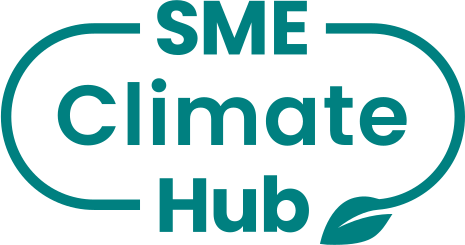See the steps your company can take towards a more sustainable future through our open resources.
Incorporated Society of British Advertisers's Climate Report
Introduction *
Commitment And Targets *
Own emissions *
Value chain emissions *
(optional)Actions and plans to reduce emissions *
Climate Solutions *
(optional)Management and strategy *
(optional)Results, challenges and outlook *
Introduction *
reporting year
*2022
number of employees in the reporting year
*20
Commitment And Targets *
net zero target year
*2030
Base year
*2022
comment on your net zero targets
*We participate in Ad Net Zero in addition to the Race to Zero and have a commitment to net zero by 2050 through science based targets. Through the actions outlined in this report, we believe that this is achievable.
near-term scope 1 target
*50
target year
*2030
near-term scope 2 target
*50
target year
*2030
near-term scope 3 target
*50
target year
*2030
comment on your near-term targets
*Through the actions outlined in this report, we believe that a 50% reduction by 2030 is achievable.
Own emissions *
scope 1 emissions
scope 1 emissions (metric tons co2e)
*0.01
own facilities
*N/A
own vehicles
*N/A
own processes
*N/A
scope 2 emissions
scope 2 emissions (metric tons co2e)
*6
total energy consumption (kwh)
*25340
renewable energy
*13
purchased electricity
*6
metric tons CO2eRenewable electricity (%)
13
purchased steam
*N/A
Renewable electricity (%)
-
purchased heating
*N/A
Renewable electricity (%)
-
purchased cooling
*N/A
Renewable electricity (%)
-
Comment on your energy consumption
*We operate from a leased office space with most of our energy use under the control of our landlords. The above use relates to metered consumption in our own office space.
Value chain emissions (optional) *
scope 3 emissions
scope 3 emissions (metric tons co2e)
*27
supply chain related - upstream emissions
purchased goods and services
*Not measured
capital goods
*Not measured
fuel and energy related activities
*13
metric tons CO2etransportation and distribution (upstream)
*Not measured
business travel
*9
metric tons CO2eemployee commuting
*5
metric tons CO2eleased assets (upstream)
*N/A
customer related - downstream emissions
transportation and distribution (downstream)
*N/A
processing of sold products
*N/A
use of sold products
*N/A
end-of-life treatment of products
*N/A
leased assets (downstream)
*N/A
franchises
*N/A
investments
*N/A
List any sources of emissions excluded:
*Cloud data storage; cleaning services; purchase of food for events; hosting of annual lunch and annual conference; attendance by members at events.
describe the calculation methodology and comment on accuracy:
*Best of breed methodologies used for each category - either directly from third parties or government standard conversions.
Actions and plans to reduce emissions *
Scope 1 Actions
own facilities
N/A
-
own vehicles
N/A
-
own processes
N/A
-
scope 2 actions
purchased electricity
Yes
We plan to move to 100% renewable energy when our electricity contract is up for renewal in 2024 or the business moves premises if earlier. We will also be reducing usage through the decommissioning of remaining kit in our server room
purchased steam
N/A
-
purchased heating
N/A
-
purchased cooling
N/A
-
scope 3 actions
supply chain related (upstream)
purchased good and services
*Yes
We will be working with our suppliers to ensure that emissions are reduced or eliminated - this will include our IT providers, cleaners and other service providers.
capital goods
*N/A
-
fuel and energy related activities
*Yes
We will engage with our landlords on their strategy to reduce or eliminate emissions.
transportation and distribution (upstream)
*N/A
-
waste in operation
*Yes
We already ensure that all waste is recycled, combusted or anaerobically digested with minimal residual emissions. We will ensure that this remains the case in the event that we move premises. We solely use recycled paper and encourage staff to minimise use of paper.
business travel
*Yes
We will strengthen the wording of our Staff Handbook and work with colleagues to ensure that business travelling is only undertaken if absolutely essential and investigate offset measures.
employee commuting
*Yes
We have adopted hybrid working and will investigate offset measures for the residual commuting.
upstream leased assets
*N/A
-
customer related (downstream)
transportation and distribution (downstream)
*N/A
-
processing of sold products
*N/A
-
use of sold products
*N/A
-
end-of-life treatment of products
*N/A
-
leased assets (downstream)
*N/A
-
franchises
*N/A
-
investments
*N/A
-
i have asked my suppliers to halve emissions before 2030 and join the un-backed race to zero campaign
*No
i have communicated my commitment and actions to my business customers and asked them to join the un race to zero
*No
Climate Solutions (optional) *
Management and strategy (optional) *
Results, challenges and outlook *

Incorporated Society of British Advertisers's Climate Report
Incorporated Society of British Advertisers's Climate Report - 2022
Introduction *
reporting year
*2022
number of employees in the reporting year
*20
Commitment And Targets *
net zero target year
*2030
Base year
*2022
comment on your net zero targets
*We participate in Ad Net Zero in addition to the Race to Zero and have a commitment to net zero by 2050 through science based targets. Through the actions outlined in this report, we believe that this is achievable.
near-term scope 1 target
*50
target year
*2030
near-term scope 2 target
*50
target year
*2030
near-term scope 3 target
*50
target year
*2030
comment on your near-term targets
*Through the actions outlined in this report, we believe that a 50% reduction by 2030 is achievable.
Own emissions *
scope 1 emissions
scope 1 emissions (metric tons co2e)
*0.01
own facilities
*N/A
own vehicles
*N/A
own processes
*N/A
scope 2 emissions
scope 2 emissions (metric tons co2e)
*6
total energy consumption (kwh)
*25340
renewable energy
*13
purchased electricity
*6
metric tons CO2eRenewable electricity (%)
13
purchased steam
*N/A
Renewable electricity (%)
-
purchased heating
*N/A
Renewable electricity (%)
-
purchased cooling
*N/A
Renewable electricity (%)
-
Comment on your energy consumption
*We operate from a leased office space with most of our energy use under the control of our landlords. The above use relates to metered consumption in our own office space.
Value chain emissions (optional) *
scope 3 emissions
scope 3 emissions (metric tons co2e)
*27
supply chain related - upstream emissions
purchased goods and services
*Not measured
capital goods
*Not measured
fuel and energy related activities
*13
metric tons CO2etransportation and distribution (upstream)
*Not measured
business travel
*9
metric tons CO2eemployee commuting
*5
metric tons CO2eleased assets (upstream)
*N/A
customer related - downstream emissions
transportation and distribution (downstream)
*N/A
processing of sold products
*N/A
use of sold products
*N/A
end-of-life treatment of products
*N/A
leased assets (downstream)
*N/A
franchises
*N/A
investments
*N/A
List any sources of emissions excluded:
*Cloud data storage; cleaning services; purchase of food for events; hosting of annual lunch and annual conference; attendance by members at events.
describe the calculation methodology and comment on accuracy:
*Best of breed methodologies used for each category - either directly from third parties or government standard conversions.
Actions and plans to reduce emissions *
Scope 1 Actions
own facilities
N/A
-
own vehicles
N/A
-
own processes
N/A
-
scope 2 actions
purchased electricity
Yes
We plan to move to 100% renewable energy when our electricity contract is up for renewal in 2024 or the business moves premises if earlier. We will also be reducing usage through the decommissioning of remaining kit in our server room
purchased steam
N/A
-
purchased heating
N/A
-
purchased cooling
N/A
-
scope 3 actions
supply chain related (upstream)
purchased good and services
*Yes
We will be working with our suppliers to ensure that emissions are reduced or eliminated - this will include our IT providers, cleaners and other service providers.
capital goods
*N/A
-
fuel and energy related activities
*Yes
We will engage with our landlords on their strategy to reduce or eliminate emissions.
transportation and distribution (upstream)
*N/A
-
waste in operation
*Yes
We already ensure that all waste is recycled, combusted or anaerobically digested with minimal residual emissions. We will ensure that this remains the case in the event that we move premises. We solely use recycled paper and encourage staff to minimise use of paper.
business travel
*Yes
We will strengthen the wording of our Staff Handbook and work with colleagues to ensure that business travelling is only undertaken if absolutely essential and investigate offset measures.
employee commuting
*Yes
We have adopted hybrid working and will investigate offset measures for the residual commuting.
upstream leased assets
*N/A
-
customer related (downstream)
transportation and distribution (downstream)
*N/A
-
processing of sold products
*N/A
-
use of sold products
*N/A
-
end-of-life treatment of products
*N/A
-
leased assets (downstream)
*N/A
-
franchises
*N/A
-
investments
*N/A
-
i have asked my suppliers to halve emissions before 2030 and join the un-backed race to zero campaign
*No
i have communicated my commitment and actions to my business customers and asked them to join the un race to zero
*No
Climate Solutions (optional) *
Management and strategy (optional) *
Results, challenges and outlook *
Not sure how to start?
See the steps you can take and get help building a plan to cut your business emissions today.
¿No estás seguro de por dónde empezar?
Revisa los pasos que puedes dar y obtén ayuda para elaborar un plan para reducir las emisiones de tu empresa hoy mismo.
لست متأكداً كيف تبدأ؟
اطلع على الخطوات التي يمكنك اتخاذها واحصل على المساعدة في وضع خطة لخفض انبعاثات شركتك اليوم.
Vous ne savez pas par où commencer ?
Découvrez les mesures que vous pouvez prendre et obtenez de l’aide pour élaborer un plan pour réduire les émissions de votre entreprise dès aujourd’hui.
Osäker på hur du ska börja?
Se vilka steg du kan ta och få hjälp med att utforma en plan för att minska dina företagsutsläpp idag.
Não sabe por onde começar?
Veja as medidas que você pode tomar e obtenha ajuda para elaborar um plano para reduzir as emissões da sua empresa hoje mesmo.
Ready to commit to lower emissions?
It’s easy to make the commitment. Just complete a form sharing your intent to reduce your emissions.
You’ll earn public recognition for taking the first step.
¿Listo para comprometerte a reducir tus emisiones?
Es fácil comprometerse. Solo tienes que completar un formulario compartiendo tu intención de reducir tus emisiones.
Ganarás reconocimiento público por tomar este primer paso.
هل أنت مستعد للالتزام بتقليل الانبعاثات؟
الالتزام سهل. ما عليك سوى تعبئة نموذج لمشاركة عزمك على تقليل انبعاثاتك.
سوف تحظى باعتراف عام باتخاذك الخطوة الأولى.
Prêt à vous engager pour réduire les émissions ?
S’engager est simple. Il suffit de remplir un formulaire indiquant votre intention de réduire vos émissions.
Vous gagnerez une reconnaissance publique pour avoir fait le premier pas.
Redo att åta sig att minska utsläppen?
Det är enkelt att göra åtagandet. Fyll bara i ett formulär där du delar med dig av din avsikt att minska dina utsläpp.
Du kommer att få offentligt erkännande för att du tagit det första steget.
Pronto para se comprometer com a redução das emissões?
É fácil assumir esse compromisso. Basta preencher um formulário informando sua intenção de reduzir suas emissões.
Você receberá reconhecimento público por dar o primeiro passo.
Register now to use our tools
Register now to use our tools

Stay updated!
Sign up for our newsletter to stay updated with the latest climate developments.
Log in to your account
Welcome back! Please enter your details.
Log in
Don't have an account? Create account to access our tools or make the SME Climate Commitment
Log in
Don't have an account? Create account to access our tools or make the SME Climate Commitment
Forgot password?
Please enter your email address. You will receive a link to create a new password via email.

 Go back
Go back

